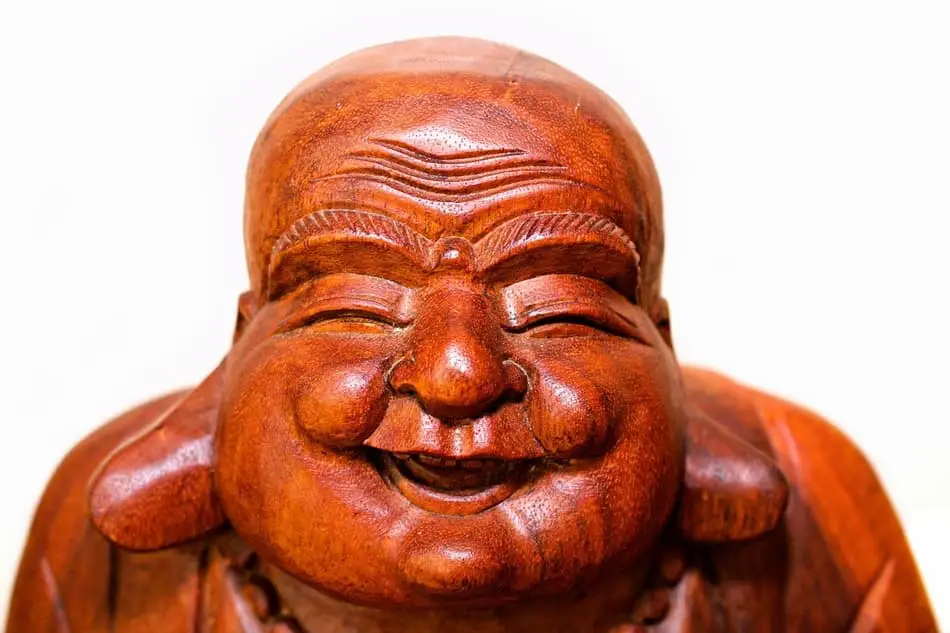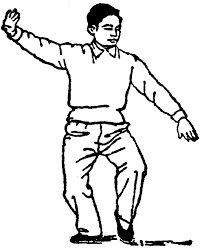Newcomers to martial arts ride the initial wave of excitement when they begin studying and attend class judiciously. People come to class to practice tai chi and happiness is a side benefit that often catches them off guard. They may have been expecting a workout, or to learn some martial skills, or maybe even a sense of peace, but becoming happy?
The relationship between tai chi and happiness is now being verified by scientific research showing that the breathing techniques, movements, posture focus, community, and challenge of learning something difficult result in a happy disposition.
Unfortunately, when we begin tai chi we might not feel dramatic effects the next day. It is more an elixir then a drug taking a couple months to build up enough experience before we’re hooked. So how do we stay motivated along the way? We educate ourselves with solid, reliable research so that we know that we are benefiting from continual practice. In this article I am going to share three extremely interesting studies and relate them back to how tai chi and happiness are intimately connected.
Research on Tai Chi and Happiness
These two research studies addressed the relationship between happiness and movement. A discerning eye can see this knowledge embedded in the tai chi form.
Study # 1: Walking
A study at Florida Atlantic University discovered that the way people walk influences their mood and perceived level of happiness. Psychologist Sara Snodgrass led a group to believe that they were taking part in an experiment on heart rate and physical activity. Participants were divided into two groups:
Group 1: A 3 minute walk with long strides, head held high and arms swinging. Think proud.
Group 2: A 3 minute walk shuffling along and watching their feet. Think depressed.
Participants in Group 1 rated themselves as significantly happier.
How this applies to tai chi and happiness
In tai chi walking and movements we work towards expansion and maintenance of our “gates.”
Let’s pause to talk about maintaining an open posture for a minute. I am using gates to describe the joints of the body. When we do tai chi we aim to maintain open joints and appendages that stay rounded. We stand as though we have two racquetballs in our armpits. Our inguinal crease is not collapsed (more on stances) as we step forward, and we are actively pulling up with the crown of the head and down on the tailbone to elongate all of those nifty spaces between our discs. Describing it even makes me feel better.
The “proud” walk that Snodgrass describes enables increased oxygen uptake to all regions of the body, lifts us into a fearless posture, and orients the crown of our head (Bahui) to the sky. Internal energy studies postulate that the Bahui/crown is the door to clean chi that is entering from the atmosphere.
Study #2: Round Movements
An experiment on the psychology of dance undertaken by S. Koch at the University of Heidelberg indicated that rounded movements increased happiness and linear movements stifled a person’s disposition. Koch conducted an experiment where subjects moved in linear routines or rounded, more flowing routines and then subjectively rated their level of happiness. The fluid movement produced a higher rating of happiness.
How this applies to tai chi and happiness
In tai chi we learn a pattern in a linear fashion but as soon as the choreography is understood, we round it off. A good example is Cloud Hands. Imagine painting a 4X4 foot square in front of you with your hand. Now shift your weight to paint the square and keep the hand steady in relationship to your body. Finally, round the corners of the box off and you have a single-handed silk reeling movement. The straight lines are needed to get the weight shift correct but then they are abandoned.
There is an intelligence embedded in the tai chi forms that is the accumulated knowledge of over 10 generations. Each new group of students-come-masters learns tai chi, enhances it, and passes it along to the next generation. It is truly a living art and only now is science able to take single snapshots of portions of its immense complexity. You benefit from doing the form and the world benefits from you doing the form.
How Does Tai Chi Make You Happy?
I want to end with one of the best examples on the internet of happiness. This is a fun look at it but also know that tai chi can help with sadness and depression. Let’s watch the video and then dissect it like scientists so we have a clear picture of what happiness is and then related it back to how tai chi can make you happy. Watch this next video for two reasons: 1) You want to laugh yourself silly. 2) You want to see what extreme happiness looks like when it is caught on camera and learn how to experience it more frequently.
Extreme Happiness Video Background:
My Norwegian is rusty (aka – non-existent) but here is roughly what transpired. Aleksander Gamme set out to walk to the South Pole and back. As he trekked out he left surpluses of supplies along the way marked by flags. He created a video-diary of portions of his expedition. This video was shot on day 86 at his second to last stash on his route back.
Extreme happiness seems to creep up on us. On our best days we recognize that we are experiencing something truly rare but typically it rolls by us we acknowledge it only as a memory.
Let’s unpack this video by the numbers.
Happiness is born out of hope
00:28: Exhausted, weighing dozens of kilos less, Aleksander is willing to accept whatever he finds but there is a sound in his voice and an urgency to his motions to find what he himself left.
Happiness is often the fruits of long and diligent work.
00:38: Aleksander pauses and takes a second to tell the camera where his efforts brought him. Whether it was a sporting event that you trained for, putting your child through college, or the passing of an exam. Supreme satisfaction is the culmination of great effort with no guarantee that you were going to succeed.
Happiness is often small, self-created events.
00:56: Cheese Doodles! The crescendo of the entire video shows Aleksander in awe and disbelief that he has the good fortune of discovering cheese doodles. His voice exudes the feeling of not being worthy of having such luck.
Happiness leads to uncontrollable physical reactions.
01:02: When was the last time you screamed at the top of your lungs? Shook with emotion? Threw something in the air for no other reason than to throw it?
Happiness has the ability to stop time.
01:17: Stupefied, minute 01:17 is so perfect because Aleksander appears to be caught in utter disbelief. It takes a second for it to register that this is really happening to him. He has to go pick up the Cheese Doodles that he threw to confirm that they are real.
Happiness is self-perpetuating.
Once bitten, a landslide of good feelings can be transferred over to any equally trivial event. A fruit nut bar (02:12) probably elicits the best scream and candies literally knock him on his back wailing (02:32). As if this wasn’t enough, the discovery of Mentos equates to proof that God exists.
Happiness is something we create for ourselves. It is not something that is given to us or done for us.
This is the most important point. Our collective efforts, while realizing it at the time or not, have the potential of resulting in sudden epiphanies and periods of bliss. What decisions are you making on a daily or hourly basis that could be the foundation for potential happiness?
Lastly, happiness is contagious.
How many times have you watched the video already? Are you smiling? Did you forward it to someone? Extreme happiness offers such a good feeling that we feel the need to perpetuate it and share.
Hallelujah! Hallelujah!
Tai chi makes you happy in much the same way and I think is a big reason why tai chi makes you feel good. It has the huge physical component which translates into effort that rewards us for our hard work when we do a move correctly, memorize the form, or start to feel the physical benefits. Tai chi makes us feel good with these small wins, as well as the big accomplishments.
Anyone who has done tai chi for a while will share that you experience periods of lost time that you can be replicated during the work day or outside of class with the same deep breathing and concentration. Tai chi’s good feeling is also contagious. I continued to practice throughout the Covid-19 pandemic but it wasn’t until I returned to class and did the form simultaneously with nine other people that I realized how much tai chi is amplified when done in groups. Either alone or all together, the mental health benefits of tai chi are truly a bonus most people don’t know about.
Resources:
- As If Principle: The Radically New Approach to Changing Your Life by Richard Wiseman. This is a really interesting book that highlights William James and his original thoughts on “movement causes emotional response” that lead to physiology-driven research. It is a fun and digestible read. Two tablespoons of interesting, hold the stuffiness.
- Koch, Sabine C. (2011). Basic body rhythms and embodied intercorporality: From individual to interpersonal movement feedback. In W. Tshacher & C. Bergomi (Eds.) The implications of Embodiment: Cognition and Communication (pp. 151-171). Exeter: Imprint Academic.
- Koch, Sabine C. “Testing Fuchs’ taxonomy of body memory A content analysis of interview data.” Body memory, metaphor and movement 84 (2012): 171.
- Snodgrass, S. E., Higgins, J. G., & Todisco, L. (1986). The Effects of Walking Behavior on Mood. Paper presented at the American Psychological Association convention.
- More on Aleksander Gamme: Aleksander Gamme, Norwegian Explorer





